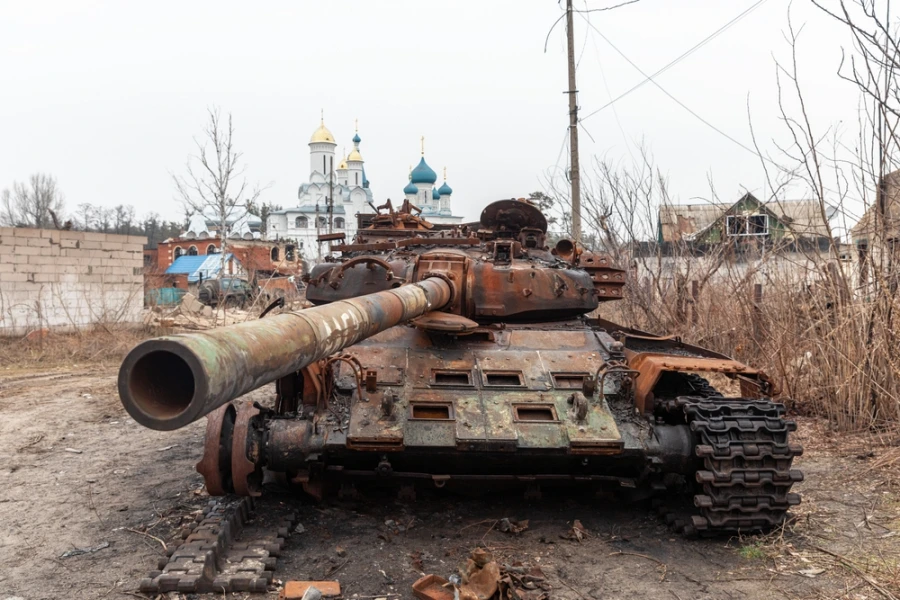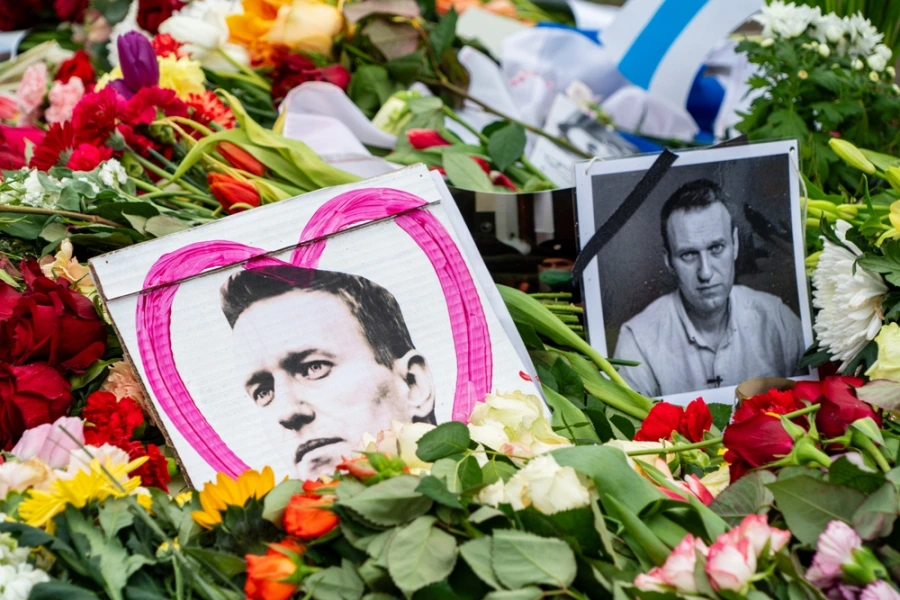Israel’s war in Gaza overshadowed the world from the war in Ukraine, which has been the centrr of attention in the past two years. For those who have already forgotten, here is a recap of the previous chapters: Following the collapse of the Soviet Union, Russia and Ukraine reached an agreement aimed at ensuring Ukraine’s territorial integrity in exchange for Ukraine’s relinquishment of the Soviet nuclear arsenal remaining on its soil. The European Union and NATO seized Russia’s disappearance from the international scene to expand eastward without resistance.
On January 1, 2000, Vladimir Putin rose to power in Russia and began to rebuild the fractured country. During his first decade in power, every state from the former Soviet bloc that dared to flirt with the West felt Moscow’s grip tighten – some through interventions in internal affairs and others through economic pressure via Russia’s monopoly over natural gas in the region. Gas is a vital necessity for heating in the cold winter and a central component in the economies of the poor countries of Eastern Europe, who netted a hefty commission for hosting pipes carrying Russian Gas to the western parts of the continent.

Ukraine received its first blow from Russia in 2004 when Viktor Yushchenko challenged Moscow in a campaign for the presidency of Ukraine. He was poisoned, and the elections against him were rigged. But then the Ukrainians took to the streets in protest, in what became known as the “Orange Revolution.” It ended with new elections where the anti-Russian candidate emerged victorious.
From then until the crisis erupted at the end of 2013, leading ultimately to the Russian invasion in February 2014, Ukraine sought ways to break free from Russian influence. Ukraine’s strategy over the years has been based on achieving energy independence, increasing economic ties with the European Union and the West in general, and approaching China as an alternative to Russia. However, Russian fears that the loss of economic pressure points would push Ukraine into NATO’s arms – the same fear that played a central role in the great war that broke out in 2022 – led Russia in 2014 to push Ukraine into a corner and force it to choose: either strengthening ties with Russia through the Customs Union or approaching Europe at the cost of an economic confrontation with Moscow that it could not withstand.
The decision led to a fierce protest in Ukraine, political turmoil, and a pro-Western revolution. Putin did not waste a second and ordered his forces to invade the Crimean Peninsula on February 20, 2014, and annex it a month later. Since then and until about 2021, the situation remained unchanged until the new president of Ukraine, Volodymyr Zelensky, sought to enlist Kiev in NATO, a move that, from the Russian perspective, is considered a declaration of war.
The Russian invasion of 2014 was defined at the time as “the most serious crisis of the 21st century” by British Foreign Secretary William Hague. However, what Washington, Berlin, London, and Paris struggled to understand was that Russian national security, based on hundreds of years of history of invasions and threats from the West, is based on creating a buffer zone between Russia and Western European powers, all of which today belong to the European Union and NATO. This lack of understanding ultimately led to Western agreement to try to change the status quo against Russia and consider Ukraine’s request to join NATO. Putin threatened and mobilized massive forces to the border. When the west refused to back down – Purin declared an invasion on February 24, 2022.

With a Little Help from Friends
What was supposed to be an easy Russian victory turned into a brutal trench warfare. The Russian army performance was disappointing – it failed in its efforts to neutralize the Ukrainian armed forces, and prevented a comprehensive use of its air force. As a result, the beginning of the largest war Europe has seen since World War II didn’t look much different from how the previous war in the 1940s was fought – bombings against military and civilian targets alike, paved the way for advancing infantry columns.
The importance of the war from the Western perspective, and on the contrary, the Russian-Iranian-Chinese axis, is unquestionable. As a result, both sides rallied to support the country representing their interests. The government of President Joe Biden stood alongside Ukraine, as it would later stand alongside Israel: generous military assistance, economic aid, and primarily diplomatic pressure aimed at ensuring Ukraine does not fall into Putin’s hands.
Just like Biden visited Israel during the war, so did the US president paid a Visit to Ukraine a year ago – on February 20, 2023, to mark the first anniversary of the war, Biden surprisingly came to Kiev in a show of support. The Biden administration has already provided military and economic assistance estimated at around $75 billion, and more help is on the way. The European Union allocated about an additional $100 billion in aid to Ukraine.
In contrast, Russia turned to its allies and received extensive armaments and logistical assistance from them in the past two years. Among the countries can be mentioned the host country Belarus, the new-old ally Turkey, which continues to play a double game with the West, and North Korea and Vietnam, which provided assistance as well.
Of all the mentioned means of warfare, the most influential assistance came from Iran, in the form of various types of suicide drones. The very fact that Russia needed advanced weapon assistance from Iran constitutes a dramatic milestone in the relations between the two countries. The Iranians made sure to convey the message to Putin that what was is not what will be when they publicly humiliated him during his visit to Tehran.
China, as Russia’s closest ally, ostensibly tries to walk a fine line. In practice, by not opposing the Russian attack and not exerting pressure on Putin to stop the war, it effectively supports the continuation of the military effort. China had economic interests in the Ukrainian economy, but it had many more interests in Russia – in the economy, in gas supply, and in the accompanying geopolitical weight of those.
How Will It End? Will It End?
As the second year of the war draws to a close, and against the backdrop of limited battlefield successes, it seems that the pressure is mounting on the Ukrainian side. At the beginning of February, President Zelensky dismissed the popular Chief of Staff, Volodymyr Zelensky, and appointed General Oleksandr Sirsky in his place. The pressure and frustration in Zelensky’s circle are growing, against the backdrop of Russian achievements on the battlefield and, on the other hand, the delay in American assistance that Biden struggles to pass through Congress.
For President Biden to prevail, he needs to bolster rapid and unequivocal support for Ukraine and Israel. However, it is evident that he is in an impossible political situation, as he tries to navigate between Republicans pushing for more significant American actions and the progressive wing of the Democratic Party, which is growing more radical from year to year. These days, Biden is struggling to pass a $95 billion aid package for NATO allies – $14 billion of which is special assistance for Israel’s war effort and $60 billion for Ukraine. From the Ukrainian perspective, this is crucial assistance, especially against the backdrop of Russian successes.
Putin, on the other hand, displays growing confidence and resilience. Just last June, it seemed that his hours in the Kremlin were numbered, as tanks from the Wagner group militia headed to Moscow. However, the rebellion that began unexpectedly ended surprisingly, as the leader of the rebellion, Yevgeny Pereguzhin, was “convinced” to retreat. Two months later, he found his death in a plane crash reportedly caused by the Russian army.

At the beginning of February, the candidacy of Boris Nedzhdin, the only opposition candidate who voiced alternative views and the only one openly opposed to the war in Ukraine, was disqualified, and later that month, the leader of the opposition, Alexei Navalny, was found dead in his cell. Russia will hold presidential elections on March 17, and it doesn’t seem that there’s anything standing in Putin’s way to his sixth term. If he is elected and completes this term, Putin will reach 30 years of absolute rule in the Kremlin. By the way, Stalin ruled the USSR for 29 years.
Two years into the war, and the end is not in sight. These are usually the circumstances when two sides are fighting over something they cannot compromise on – the principle that drives Russia not to allow Western expansion eastward remains unchanged. Anyone looking for a decisive victory or even a ceasefire agreement, will not find it on the battlefield but in the halls of power – only a change in the Kremlin or, alternatively, Donald Trump’s re-election as US president and his decision to disengage from Ukraine, could fundamentally change the situation and open the door to compromise, and an eventual end of the war.





